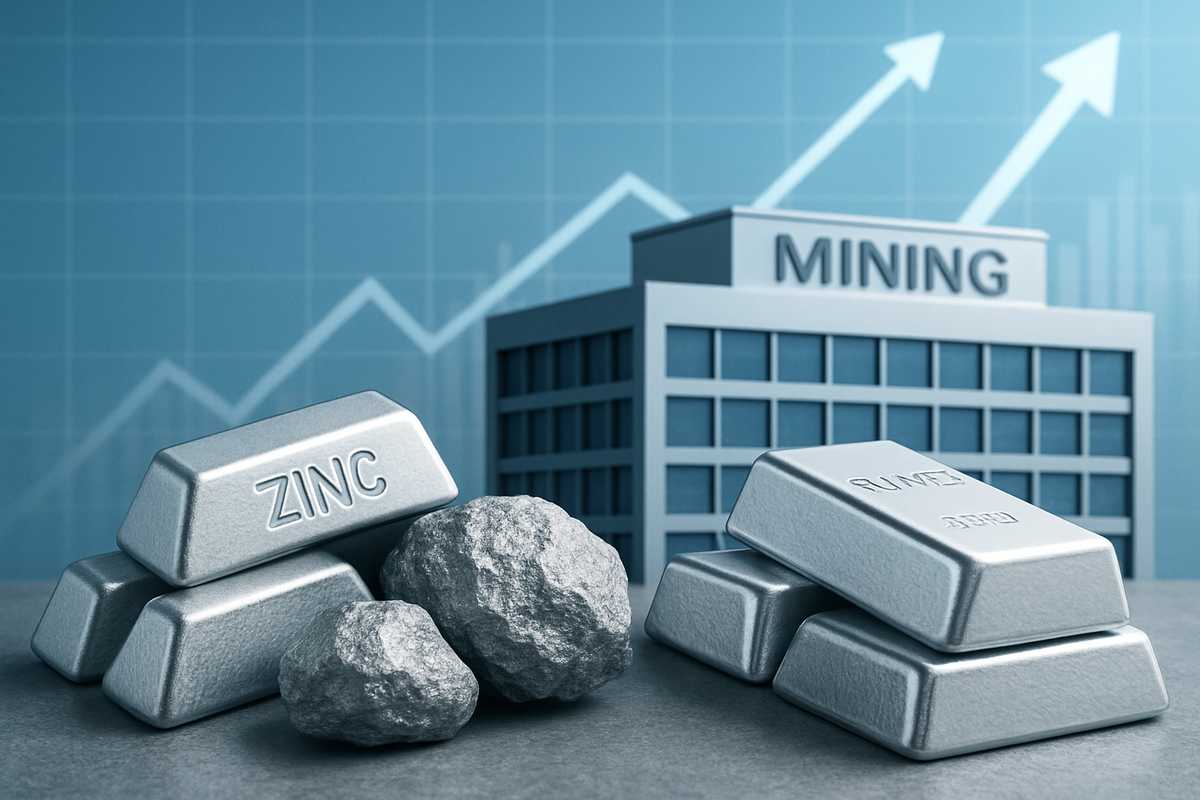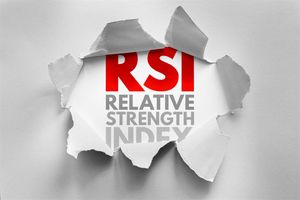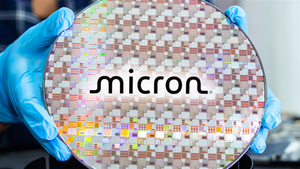
Udaipur, India – Hindustan Zinc Limited (NSE: HINDZINC), a global leader in integrated zinc, lead, and silver production, has announced a phenomenal financial performance for the second quarter of fiscal year 2025-26, ending September 30, 2025. The Vedanta group company reported a significant 13.84% year-on-year surge in consolidated net profit, reaching an impressive ₹2,649 crore. This record-breaking quarter underscores the company's strategic prowess and operational efficiency, directly benefiting from the robust global commodity markets, particularly the soaring prices of silver and a healthy trend in zinc.
This remarkable profit ascent marks Hindustan Zinc's highest-ever second-quarter revenue and EBITDA, signaling a period of unprecedented growth and profitability. The stellar results are a testament to favorable market dynamics, a stronger U.S. dollar, and enhanced by-product realizations, positioning the company as a significant beneficiary in the current commodity supercycle and setting a strong precedent for its future trajectory.
A Deep Dive into Hindustan Zinc's Record-Breaking Quarter
Hindustan Zinc's consolidated net profit for Q2 FY26 stood at ₹2,649 crore, a substantial increase from ₹2,327 crore recorded in the corresponding period of the previous fiscal year. This impressive growth was mirrored in the company's consolidated revenue from operations, which climbed 3.6% year-on-year to ₹8,549 crore, up from ₹8,252 crore in Q2 FY25. The total consolidated income for the July-September period further solidified this positive trend, reaching ₹8,787 crore.
A key highlight of the quarter was the achievement of Hindustan Zinc's best-ever second-quarter EBITDA (Earnings Before Interest, Tax, Depreciation, and Amortisation) of ₹4,467 crore, marking a 7% year-on-year jump. This translated into an exceptional industry-leading EBITDA margin of 52%, expanding from 50% in the previous year. The company also reported an all-time-high mined metal production of 258 Kt and a five-year low in zinc cost of production at $994 per tonne, showcasing optimized operational efficiency.
The direct linkage to commodity prices, especially silver, cannot be overstated. Silver emerged as a primary profit driver, contributing approximately 40% of the overall profits in Q2 FY26, equating to nearly ₹1,060 crore. Silver revenue alone surged to ₹1,706 crore in the quarter, reflecting a 10% quarter-on-quarter and a 20% year-on-year increase. This "silver bonanza" was propelled by soaring global market prices; silver, which was priced at US$36 per ounce on July 1, 2025, dramatically surged to US$44 per ounce by September 22, 2025 – a 14-year high – and further climbed above US$52.35 per ounce around October 13, 2025, establishing a new record.
Similarly, healthy prices for zinc played a crucial role. Zinc prices in September 2025 averaged USD 2,937 per metric ton, a 5.2% increase from August. The price had risen from approximately $2762.56 per metric ton in July 2025 to $2936.74 per metric ton by September 30, 2025. The confluence of lower production costs, higher by-product realizations, and a stronger U.S. dollar further bolstered revenue and operating profit. Arun Misra, CEO of Hindustan Zinc (NSE: HINDZINC), emphasized the company's focus on its "2x growth expansion" and its commitment to recovering value from every resource, including energy transition metals, aligning with India's clean energy independence goals.
Winners and Losers in the Commodity Upswing
The significant surge in zinc and silver prices, which propelled Hindustan Zinc's (NSE: HINDZINC) record-breaking Q2 FY26 performance, has created a distinct divide in the global mining landscape, generating clear winners and presenting challenges for others. Companies with substantial, unhedged exposure to these metals, coupled with efficient, low-cost operations, are experiencing a period of heightened profitability and strategic advantage.
Among the prominent beneficiaries, Glencore Plc (LSE: GLEN), as the world's largest zinc producer, stands to gain immensely. Its extensive global mining operations mean that a robust zinc market directly translates into enhanced overall profitability and a positive impact on its stock performance. Similarly, Teck Resources Limited (TSX: TECK.A, TECK.B; NYSE: TECK), a major polymetallic miner and one of the top global zinc producers with assets like the Red Dog mine, is seeing its revenues and operating margins significantly bolstered by the favorable price environment. Their focus on operational efficiency further amplifies these benefits.
In the silver segment, companies primarily focused on the precious metal are experiencing a "silver bonanza" akin to Hindustan Zinc's. Fresnillo PLC (LSE: FRES; OTC: FNLPF), the world's leading primary silver producer operating predominantly in Mexico, is a clear winner. Its direct and high leverage to silver prices means its stock is likely to see strong positive reactions. Pan American Silver Corp. (TSX: PAAS; NASDAQ: PAAS), another major primary silver producer with operations across the Americas, is also highly exposed to these price movements, leading to strong financial results and potential stock appreciation. First Majestic Silver Corp. (TSX: AG; NYSE: AG), known for its focus on cost efficiency and high-grade ore extraction in Mexico, is similarly well-positioned to capitalize on the rising silver tide, with its stock historically showing leveraged exposure to silver price movements.
Conversely, some companies may find themselves relatively disadvantaged. High-cost producers of zinc or silver, whose "all-in sustaining costs" (AISC) are above the industry average, will see their profit margins squeezed or benefit far less from price increases compared to their more efficient competitors. These companies might struggle to expand or even maintain current output if price gains are insufficient to cover their operational expenses. Furthermore, miners that have engaged in extensive hedging strategies to lock in future selling prices, while protected from price drops, will not fully benefit from the significant upside of surging commodity prices, effectively "losing" potential revenue compared to unhedged producers. Lastly, diversified mining companies where zinc and silver represent a smaller proportion of their overall revenue might experience a more muted impact from this specific commodity rally, especially if other commodities in their portfolio are underperforming, leading to less dramatic stock reactions.
The Wider Significance: A New Commodity Supercycle?
Hindustan Zinc’s (NSE: HINDZINC) exceptional Q2 FY26 performance, fueled by surging zinc and silver prices, is not an isolated event but a potent indicator of broader shifts within the global commodities market. This rally signals the convergence of several powerful forces, hinting at the potential emergence of a new commodity supercycle driven by the demands of digitalization and the green energy transition.
At the core of this upswing is the burgeoning industrial demand for both metals. Silver, traditionally a precious metal, has become indispensable in high-efficiency circuit boards, sensors for AI hardware, next-generation data centers, solar photovoltaic (PV) cells, and 5G infrastructure, with industrial use projected to exceed 700 million ounces in 2025. Zinc, vital for corrosion protection in steel, is critical for renewable energy infrastructure and advanced battery technology. This robust demand is juxtaposed against persistent supply constraints; silver's supply, largely a by-product of other metal mining, is highly inelastic, facing seven consecutive years of deficits. Zinc supply has also been tightened by mine setbacks and refinery bottlenecks, exacerbating the supply-demand imbalance. Geopolitical factors, with nations prioritizing critical mineral security, and macroeconomic conditions, including expectations of U.S. Federal Reserve interest rate cuts, further amplify this trend.
The ripple effects of this commodity surge are profound. While agile mining companies like Hindustan Zinc are experiencing substantial revenue boosts and margin expansion, enabling increased investment in exploration and technological upgrades, downstream industries face elevated operational and procurement costs. Sectors such as electric vehicle (EV) manufacturing, electronics, and construction, heavily reliant on these metals, could see squeezed profit margins or higher end-product prices. Conversely, partners and service providers to the mining sector, including equipment manufacturers and technology providers, are likely to benefit from increased capital expenditure. The competitive landscape is also evolving, with a potential shift towards more security-oriented regional supply systems, favoring vertically integrated companies or those with localized supply chains.
This sustained commodity rally also brings significant regulatory and policy implications. Governments are increasingly focused on the "security of supply" for critical minerals, potentially leading to policies that encourage domestic exploration, mining, and refining through subsidies or streamlined permitting. Regulatory bodies are stepping up market oversight to prevent excessive speculation, while trade policies, such as tariffs, can directly impact metal prices, reshaping global trade and pricing models. Furthermore, commodity-exporting nations are compelled to strengthen their fiscal and monetary frameworks to manage price shocks. The growing emphasis on environmental and sustainable mining practices, as evidenced by Hindustan Zinc’s inclusion in the International Council on Mining and Metals (ICMM), will also shape future regulations.
Historically, commodity prices are notoriously cyclical, with "supercycles" characterized by consistent price increases over extended periods. The current trends bear striking similarities to past demand-driven booms, such as the 1996-2011 supercycle fueled by industrialization in emerging economies. While commodity prices strongly correlate with mining company share prices in the short term, long-term performance remains heavily influenced by operational discipline and capital allocation. Hindustan Zinc's ability to achieve low production costs positions it well to leverage this current boom, avoiding the historical pitfall where miners sometimes dilute profit benefits during upcycles by lowering cut-off grades to increase reserves.
What Comes Next: Navigating a Dynamic Future
Hindustan Zinc's (NSE: HINDZINC) stellar Q2 FY26 performance, buoyed by robust commodity prices, positions the company at a pivotal juncture, facing both significant opportunities and potential challenges in the short and long term. The immediate future for the broader market, particularly for zinc, presents a mixed picture, even as silver maintains a strong bullish trajectory.
In the short term, while Hindustan Zinc capitalized on strong prices in Q2 2025, the general market sentiment for zinc in 2025 suggests a potential softening. Analysts from institutions like the World Bank and Fitch anticipate a decline in zinc prices to around $2,600/tonne, citing an anticipated supply surplus from mine reopenings and a lag in demand from downstream industries. However, "excessively low zinc ingot inventory" levels could still offer some price support. Conversely, silver's Q2 2025 surge, with prices around $46-47 per ounce at the end of September 2025, indicates a strong short-term bullish trend, driven by increased investment appeal, accelerating industrial demand across manufacturing sectors (solar, electronics, 5G, EVs), and portfolio hedging.
Looking at the long term, Hindustan Zinc's strategic vision, "Hindustan Zinc 2.0," aims to transform it from a zinc-and-silver leader into a diversified, multi-metal enterprise. This involves active exploration and advancement in critical minerals such as copper, lithium, nickel, cobalt, potash, and rare earth elements, aligning perfectly with the global energy transition and India's industrial growth. Significant investments of approximately ₹120 billion are underway for new smelters and mine expansions, targeting a doubling of production capacity and scaling silver output to 800-1000 metric tonnes. The company's continued focus on cost leadership, aiming for zinc production costs below $1,000 per tonne, coupled with India's robust domestic demand, will sustain its competitive edge.
Potential strategic pivots for Hindustan Zinc include an accelerated multi-metal expansion to reduce reliance on zinc and silver, enhanced focus on high-margin Value-Added Products (VAPs) like zinc alloys, and further investments in technological superiority through AI and automation. Becoming a leader in the circular economy, beyond its existing tailings reprocessing plant, and forging strategic partnerships could also solidify its future position.
Emerging market opportunities for HZL and the sector include vast, underexplored reserves of critical minerals in regions like Africa and South America, alongside growing domestic demand in rapidly industrializing nations like India. The global push to diversify critical mineral supply chains away from dominant players also creates new avenues. However, challenges loom, including political instability and resource nationalism in emerging markets, infrastructure deficiencies, geopolitical risks like trade tensions, and the increasing demand for stringent Environmental, Social, and Governance (ESG) standards.
Various scenarios and outcomes could unfold. A bullish scenario sees sustained strong commodity prices, rapid success in HZL's diversification, and an accelerating Indian growth story, leading to the company achieving its 2x growth targets and becoming a global multi-metal leader. A neutral/moderate scenario involves volatile but generally supported commodity prices, gradual diversification progress, and consistent Indian economic growth, allowing HZL to maintain its strong market position but with incremental shifts. Conversely, a bearish scenario would entail a significant and prolonged commodity price correction, coupled with diversification challenges and increased headwinds in emerging markets, compressing profitability and potentially forcing a re-evaluation of growth plans. Hindustan Zinc's ability to effectively execute its strategic pivots, navigate these market complexities, and uphold its commitment to sustainable practices will be paramount in determining its trajectory.
Comprehensive Wrap-Up: Navigating the Commodity Crossroads
Hindustan Zinc's (NSE: HINDZINC) Q2 FY26 results stand as a testament to strategic operational excellence and adaptability in a dynamic global commodity market. The company's impressive 13.8% year-on-year surge in net profit to ₹2,649 crore, coupled with a 3.6% rise in revenue, was a direct outcome of higher commodity prices, a stronger U.S. dollar, and enhanced by-product realizations. Crucially, silver emerged as a significant profit driver, contributing approximately 40% to the overall bottom line, showcasing the value of a diversified revenue stream. Operational efficiency was also a hallmark, with Hindustan Zinc achieving its highest-ever second-quarter revenue and EBITDA, maintaining a robust 52% operating margin, and reaching a five-year low in zinc production cost at $994 per tonne.
Moving forward, the commodity market presents a nuanced picture. While Hindustan Zinc's silver segment appears poised for continued strength, the broader outlook for zinc in 2025 and 2026 is generally bearish. Forecasts from organizations like the International Lead and Zinc Study Group (ILZSG) anticipate a global surplus of zinc, driven by increasing mine and smelter output, particularly from China, and tempered by subdued construction demand. This projected oversupply is expected to exert downward pressure on zinc prices. However, India's accelerating infrastructure development and growing manufacturing sector remain a bright spot, creating robust domestic demand for zinc and other metals, which could partially offset global headwinds for Hindustan Zinc.
The lasting significance of Hindustan Zinc's Q2 FY26 performance lies in its demonstration of strategic resilience. As India's sole integrated zinc-lead-silver producer, the increasing contribution of silver to its profitability offers a vital hedge against potential downturns in the more cyclical zinc market. The company's sustained focus on cost leadership, operational efficiencies, and strategic capital allocation, including significant investments in a multi-metal future, positions it favorably to navigate anticipated market softness. Hindustan Zinc's role in supporting India's drive for mineral self-reliance and infrastructure growth further solidifies its strategic importance within the national economic framework. Continued improvements in Environmental, Social, and Governance (ESG) metrics will also be crucial for attracting a broader institutional investor base.
For investors, vigilance will be key in the coming months. Close monitoring of global zinc prices and demand, especially any shifts in China's construction sector or significant inventory changes, will be essential. The continued strength and contribution of silver to Hindustan Zinc's profitability will also be a critical indicator. Broader macroeconomic factors, including global interest rate decisions, the strength of the U.S. dollar, and evolving trade tensions, will undeniably influence commodity prices and overall market sentiment. Furthermore, tracking the timely completion and successful commissioning of Hindustan Zinc's key projects, such as the fertilizer plant and hot acid leaching technology, will provide insights into future growth and efficiency. Finally, the company's dividend policy and capital allocation strategies for its ambitious multi-metal diversification will be important considerations for long-term value creation.
This content is intended for informational purposes only and is not financial advice




